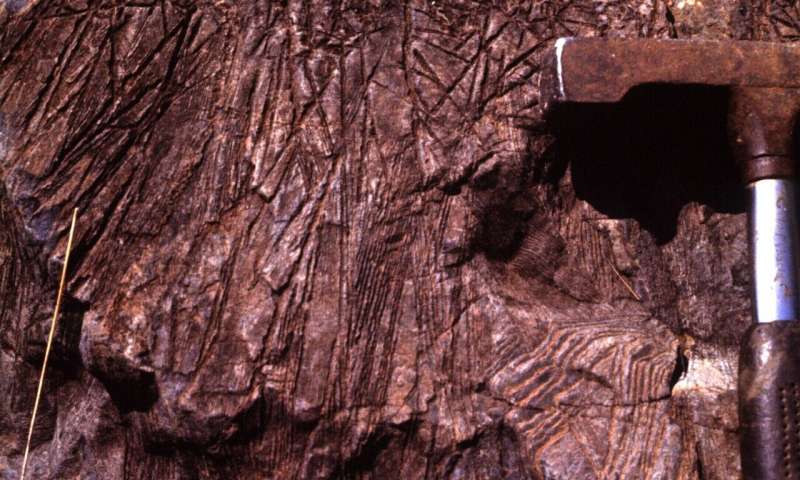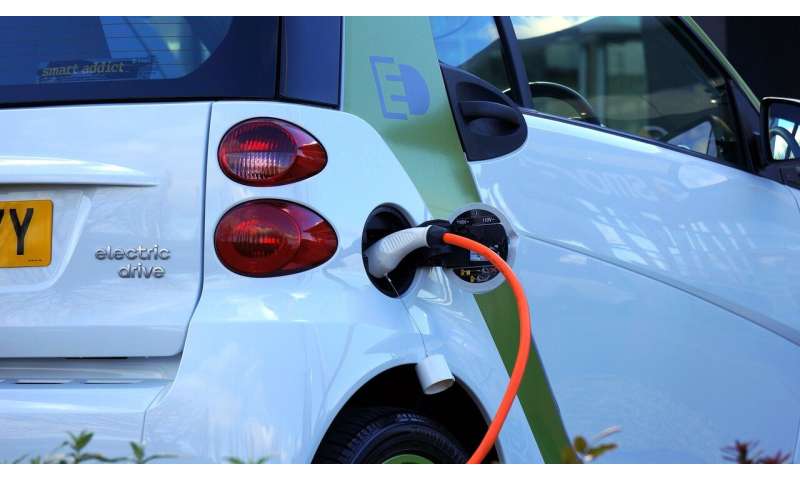A new mechanism improves the efficiency of antibacterial surfaces
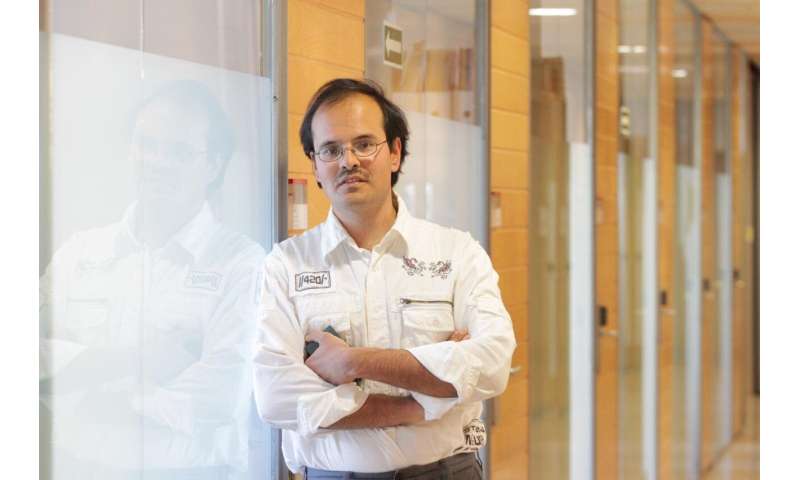
Resistance to antibiotics has become a serious public health problem. Hospital infections, prostheses or surgical implants that become infected and do not respond to treatment are a real challenge to the research community, which has been seeking alternatives for effectively eliminating these bacteria for years. In 2012 the researchers from the Department of Chemical Engineering of the Universitat Rovira i Virgili, Vladimir Baulin and Sergey Pogodin, opened a line of research to develop antibacterial models that were inspired by insects. The wings of, for example, dragon flies are made up of complex structures of nanometric geometric shapes, which are highly efficient at killing bacteria. In their attempt to understand these forms and reproduce them as new anti-bacterial materials, a team consisting of Vladimir Baulin, Marc Werner, from the Leibniz-Institut für Polymerforschung (Dresden, Germany) and Elena Ivanova from the Australian university RMIT, discovered that the elasticity of nanopillars is a key factor because they can retain and release sufficient energy to kill the bacteria.
The line of research that had been initiated years before had already found that the wings of these insects are made up of a structure of nanopillars that eliminates bacteria mechanically, which is known as the biocide effect. These mechano-bactericidal properties—by which bacteria are killed almost instantly when they come into contact with the pillars without any need to use a chemical substance—raises numerous questions that researchers are attempting to answer by experimenting with different shapes and geometries that will help them to understand which has the most efficient bactericidal effect.
They investigated the bactericidal capacity on nanometric surfaces by varying the height of the pillars and keeping the other dimensions constant. The results, which have just been published in the journal PNAS, have shown that the flexibility of these pillars is closely connected to their appearance. "Even the solid and rigid materials become flexible if one of the dimensions is much longer than the others (for example, a guitar string or a long pillar)," says Vladimir Baulin. The researchers have developed a physical model that shows that when bacteria come into contact with these pillars they can accumulate elastic energy even at such a small scale. Thanks to this model it is now possible to calculate the elastic response of other structures and optimize their antibacterial properties.

The deformation forces of the pillar caused by the contact of the bacteria are so high that they can even break the bacteria's cell wall, thus providing a new mechanism for killing them. These forces are associated with surface tensions imposed on the bacterial cells. The pillars under the bacteria that approach stretch more at the edges, whereas the pillars located under the center of the bacteria practically do not change. The study shows, then, that the gradual variation in the height of the pillars of a nanometric surface can determine their bactericidal efficacy.
This discovery may lead to a completely new class of antibacterial materials, which could range from packaging for food to filters or masks. Unlike traditional filters, where the bacteria remain but are not deactivated, the new nanoscale elastic material can safely kill the bacteria in a matter of minutes, which means that they cannot activate any defense mechanisms or give any resistance at all," concluded Baulin
More information: Elena P. Ivanova et al, The multi-faceted mechano-bactericidal mechanism of nanostructured surfaces, Proceedings of the National Academy of Sciences (2020). DOI: 10.1073/pnas.1916680117
Journal information: Proceedings of the National Academy of Sciences
Provided by Universitat Rovira i Virgili

 ]
]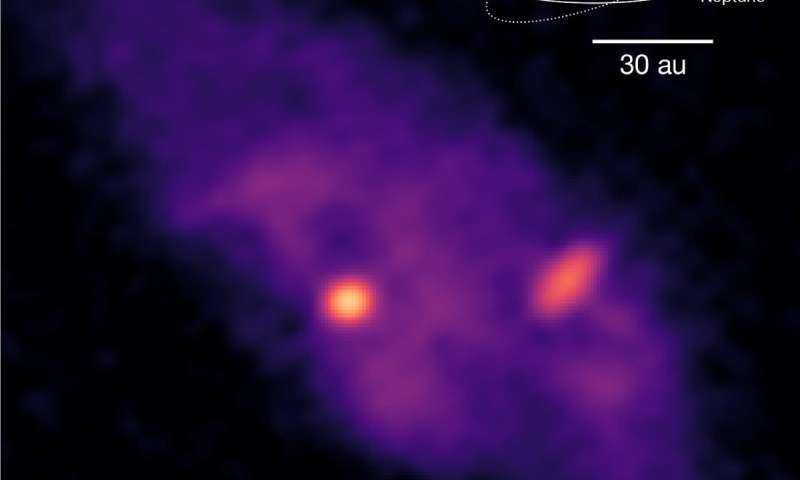 Detailed view of the binary proto-star system with a size comparison to our solar system. The separation between the sources A1 and A2 is roughly the diameter of the Pluto orbit. The size of the disk around A1 (unresolved) is about the diameter of the asteroid belt. The size of the disk around A2 is about the diameter of the Saturn orbit. Credit: MPE
Detailed view of the binary proto-star system with a size comparison to our solar system. The separation between the sources A1 and A2 is roughly the diameter of the Pluto orbit. The size of the disk around A1 (unresolved) is about the diameter of the asteroid belt. The size of the disk around A2 is about the diameter of the Saturn orbit. Credit: MPE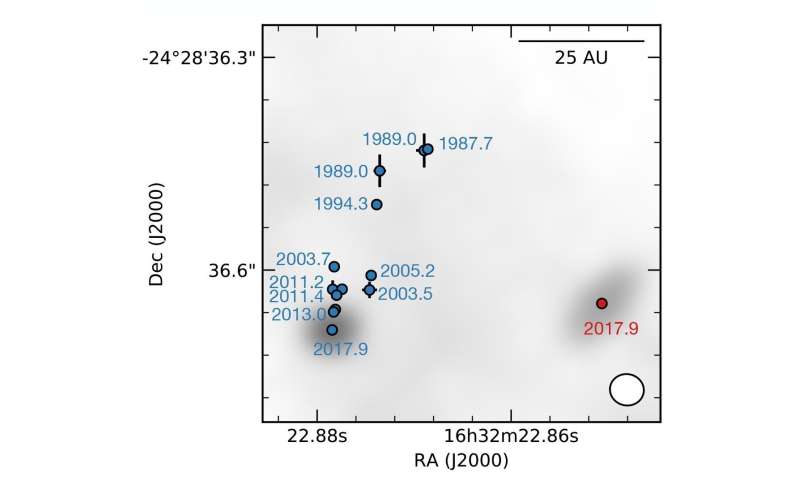


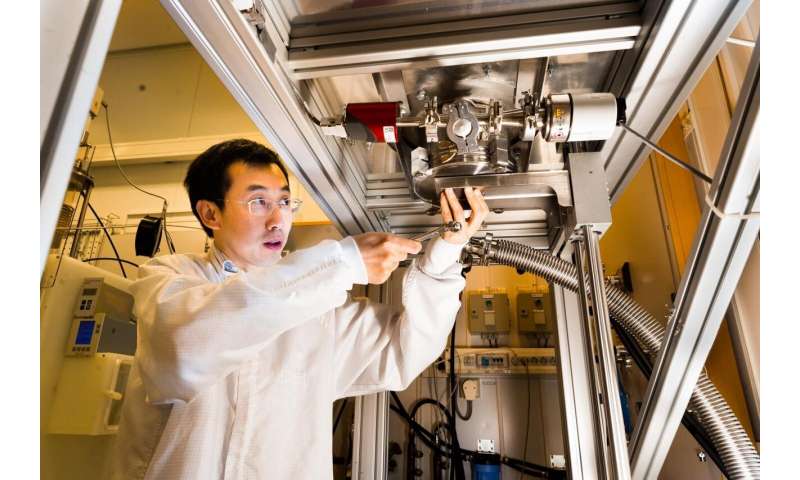


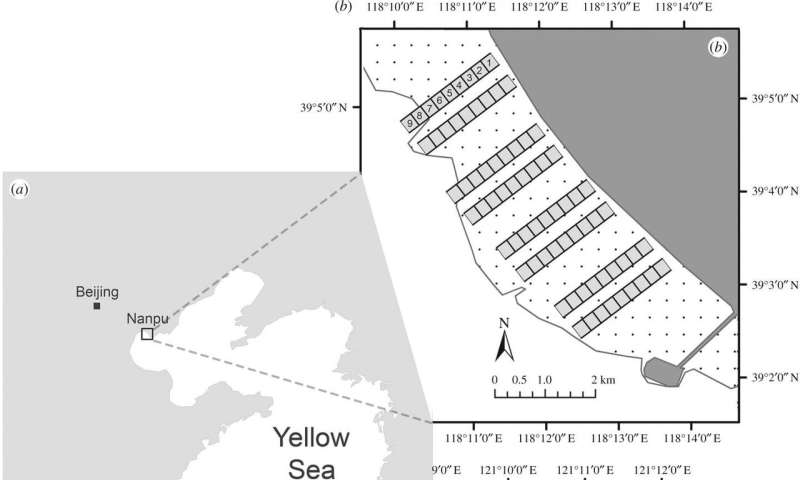 A key difference of the Princeton research was that it included observations of the high-tide period when the middle and lower tidal flats are underwater. The researchers focused on the East Asia-Australasian Flyway, which spans from Australia to Siberia along the rapidly developing coast of China where birds stop to rest and refuel. The researchers studied birds at two well-known stopover sites in the Yellow Sea region, Nanpu (b) near Beijing and Rudong (c) outside of Shanghai. The dark squares indicate the study plots along the upper, middle and lower tidal flats (dotted area). The white areas represent the sea beyond the low-tide line. Credit: Tong Mu, Department of Ecology and Evolutionary Biology
A key difference of the Princeton research was that it included observations of the high-tide period when the middle and lower tidal flats are underwater. The researchers focused on the East Asia-Australasian Flyway, which spans from Australia to Siberia along the rapidly developing coast of China where birds stop to rest and refuel. The researchers studied birds at two well-known stopover sites in the Yellow Sea region, Nanpu (b) near Beijing and Rudong (c) outside of Shanghai. The dark squares indicate the study plots along the upper, middle and lower tidal flats (dotted area). The white areas represent the sea beyond the low-tide line. Credit: Tong Mu, Department of Ecology and Evolutionary Biology

